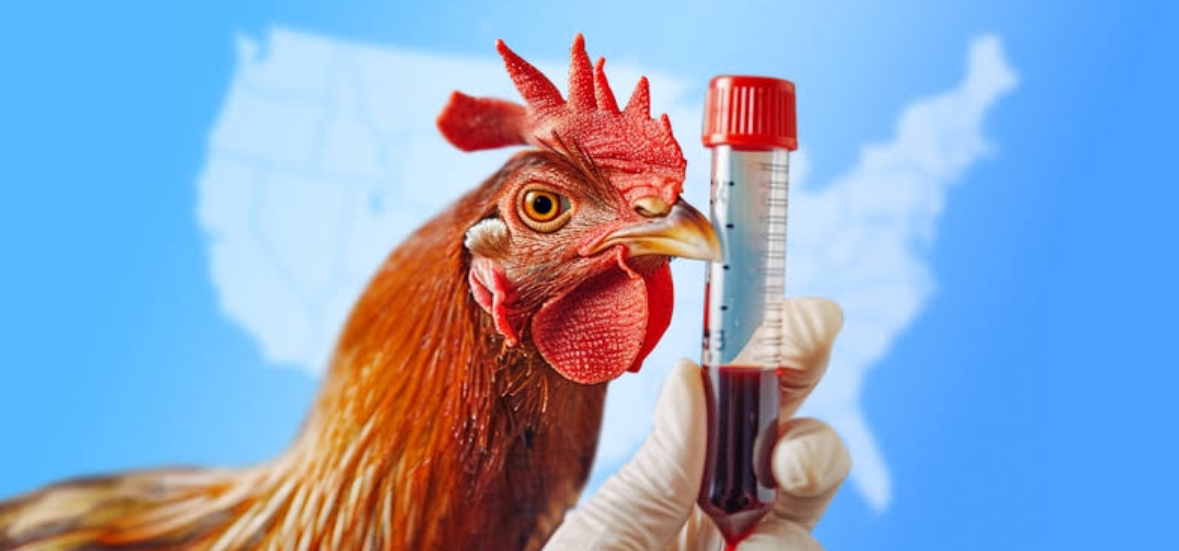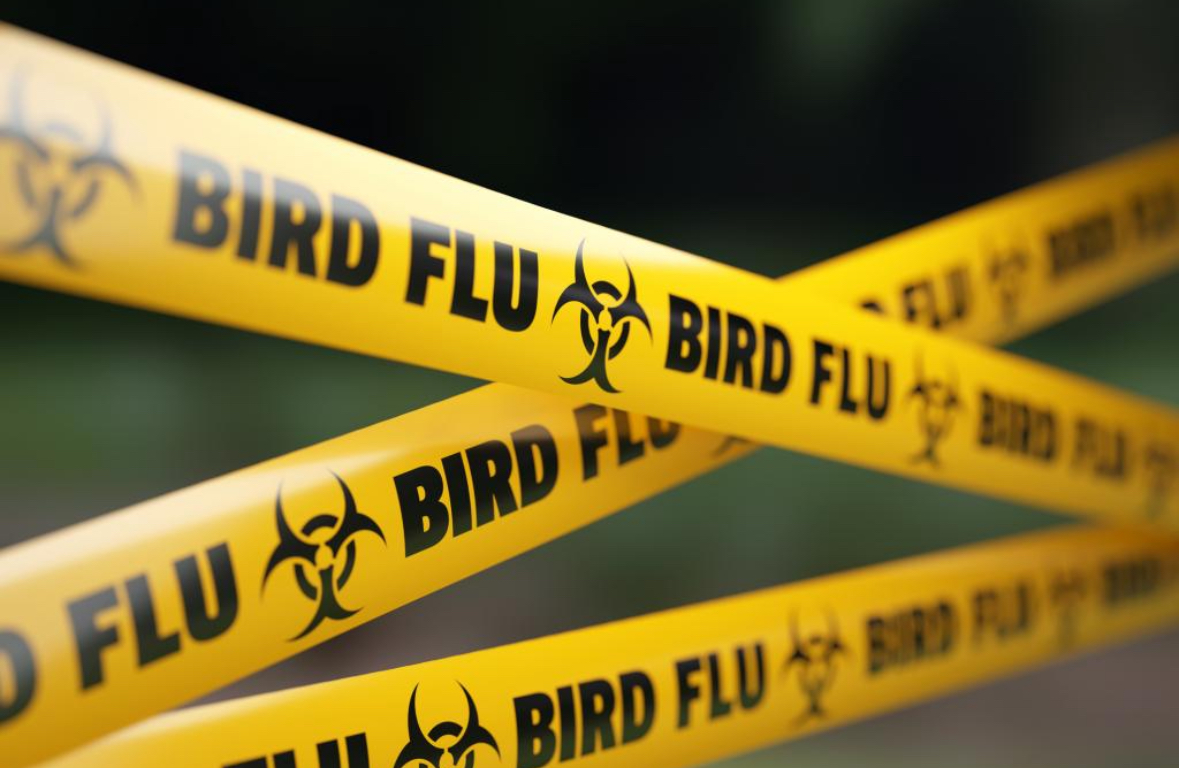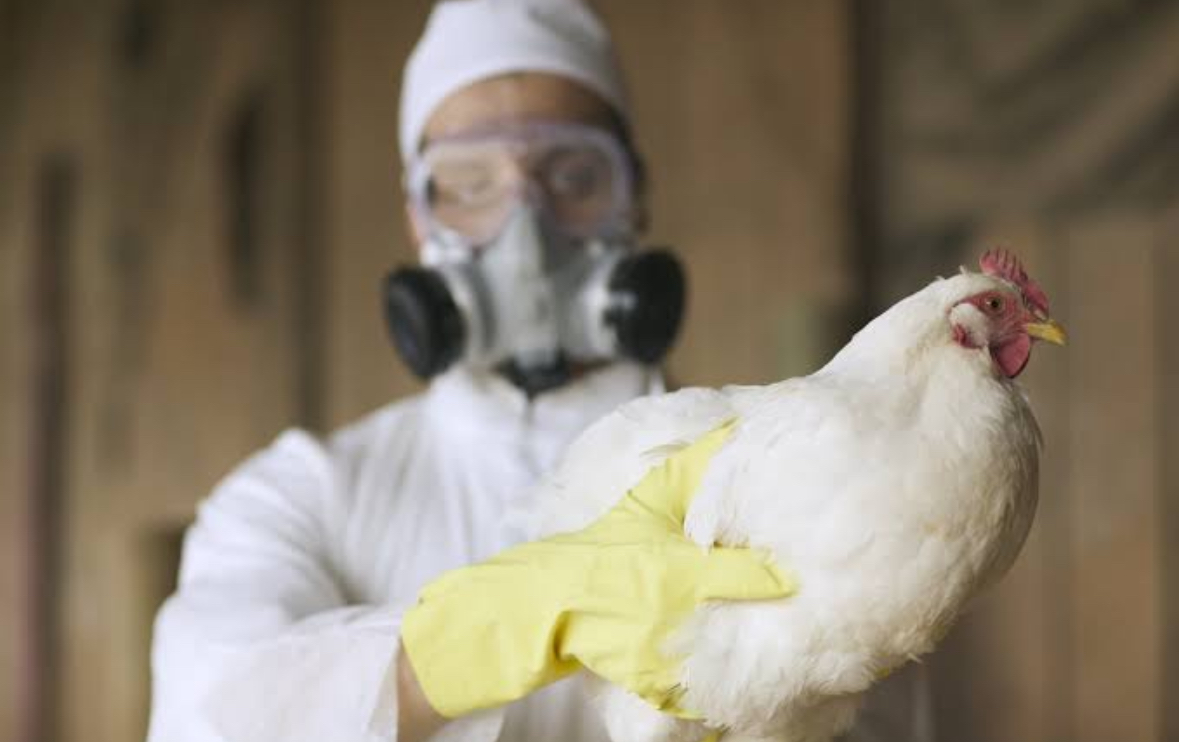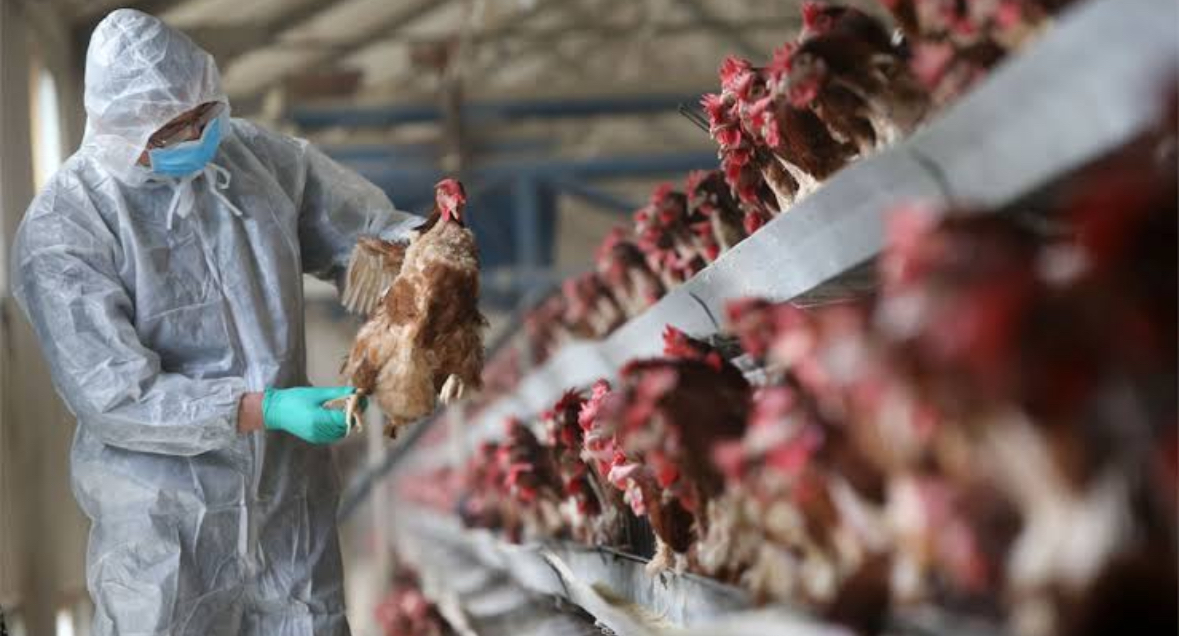The recent discovery of a highly hazardous avian flu virus infection in a Texas farm worker has sparked global anxiety. The avian flu has returned to the United States has had another instance of the avian flu. This has made researchers compare possible outcomes of the COVID-19 epidemic.

What is Avian Influenza (Bird Flu) and How Does It Spread to People?
The virus known as avian influenza, or bird flu in scientific circles, primarily affects birds but can also infect humans. The Influenza Specifically, strains H5 and H7 of the virus cause the disease. Worldwide, wild water birds harbour these viruses in their natural habitat. They can spread to domestic poultry and transform into incredibly dangerous forms there.

Direct contact with diseased birds, their droppings, or contaminated surfaces is typically how humans become sick. Although they are rare, reports of human-to-human transmission are still few. A farm worker in Texas became sick with the virus when dairy cows infected them, a case that emphasises the possibility of zoonotic transmission in agricultural environments.
Symptoms and Prevention
- In birds, symptoms include diarrhoea, breathing difficulties, swollen heads, and sudden death.
- In humans, symptoms can range from mild, such as cough, headache, sore throat, and fever, to severe conditions like pneumonia requiring hospitalisation.

Prevention
- To stop bird flu, strong biosecurity measures must be used in poultry farms, early detection must be achieved through surveillance, and infected birds must be killed quickly to stop outbreaks.
- Humans receive antiviral medications like oseltamivir (Tamiflu), but the effectiveness of these medications varies depending on the type of virus.
Comparisons and expert opinions with COVID-19
Given how frequently human cases of bird flu have resulted in fatalities, experts fear that the infection could ignite a pandemic akin to COVID-19. The World Health Organisation (WHO) reports that since 2003, 52% of those with avian flu diagnoses have passed away. Many are worried about the possibility of an epidemic because of the high death rate and the fact that it can spread from person to person.

The importance of addressing the virus's threat immediately was emphasised by bird flu researcher Dr. Suresh Kuchipudi during a recent news conference. He stated, "This virus has been at the top of the pandemic list for many, many years and probably decades." Saying that this virus is now very likely to cause an outbreak is quite dangerous.
A consultant for pharmaceutical companies, John Fulton, concurred with these worries. If bird flu persists in killing so many people and changes, he warned, it may be "100 times worse than COVID."

Impact on India
Due to its dense population and extensive chicken industry, India could easily contract bird flu and face dire consequences. The emergence of a particularly severe strain of bird flu that could spread from person to person is a major public health concern. Previous virus outbreaks have taken place in India.

There have been other outbreaks of infectious diseases in India, but bird flu is unique in that it spreads swiftly and has a high fatality rate. Coordinating foreign and national efforts is necessary to mitigate its consequences.
Finally, it is evident from the most recent bird flu outbreak in the United States that avian influenza is still a global public health problem. Understanding the virus, taking the necessary measures, and improving surveillance and response skills are all essential in order to reduce the dangers of bird flu. Experts have alerted us to the possibility of a pandemic and made analogies to the COVID-19 outbreak. This is especially important in countries like India that have large chicken industries and people who are particularly vulnerable.
Image Source: Multiple Agencies
(Inputs from agencies)
© Copyright 2024. All Rights Reserved Powered by Vygr Media.






















